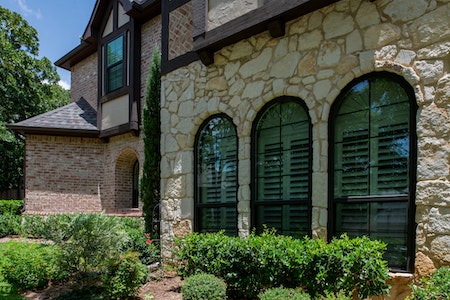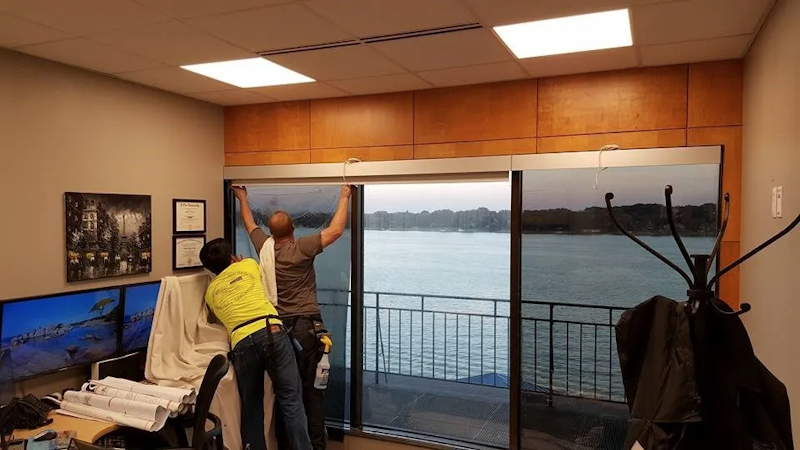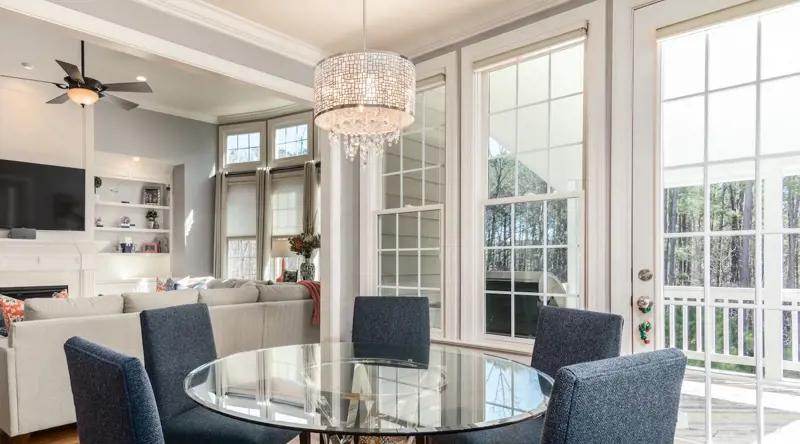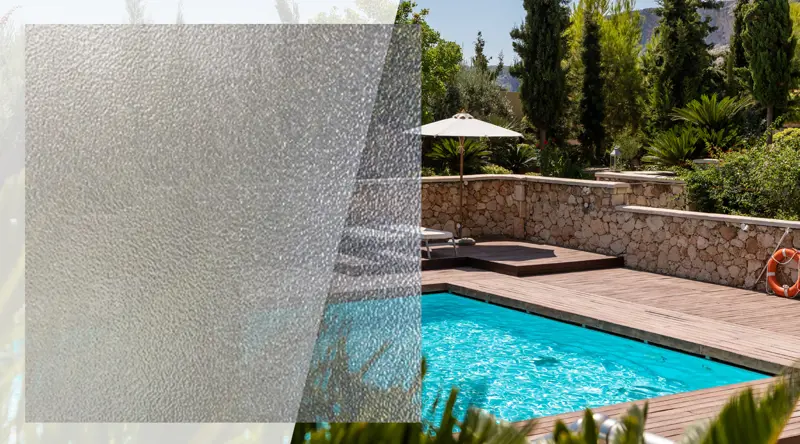
All About Home Window Tinting
Home window tinting is a popular alternative to replacing windows with energy-efficient glass. This post will cover everything you need to know about residential window tinting, including:
- the different types of window tints available,
- benefits and drawbacks of home window tinting
- how it compares to installing new energy-efficient windows in the long run
- and the cost of installation.
Use the links below to jump ahead
What is home window tint?
Tinted glass refers to any window that has received treatment with a material that forms a film or coat over the outside of the windowpane. The terms window film and window tint are often used interchangeably.
Windows can be tinted in a variety of different colors with a range of different materials. Each of these accomplishes a slightly different purpose or helps the window to achieve a certain look of window glass with different pros and cons.
For homeowners looking for some energy savings, tinting films can provide some privacy benefits while delaying the need for replacement windows.
Homes with single-pane windows and tinted glass won’t come close to matching the efficiency of new insulated replacement windows. However, it could still be a viable option for homeowners with historic homes.
Original windows in historic homes don't have much if any insulating value. However, window tint can preserve the aesthetic value. Particularly for neighborhoods that have restrictions on the types of replacement windows that can be installed.
Common types of window tint
Here are five common types of window tint, although other types and variations exist.
Standard window tint
Standard window tint is film that is designed to provide privacy and block sunlight. It comes in a variety of shades and colors. This aftermarket tint comes in sheets and is often sold in rolls. Some manufacturers make pre-cut-sized sheets ordered to fit your windows.
While this type of film helps reduce sunlight, it does not block Ultraviolet Radiation (UV) and therefore does not lower the temperature inside your home or improve energy efficiency much.
The film also isn’t as durable as some options and can develop tears and is vulnerable to wearing out over time.
Ceramic window tint
Ceramic tint is considered the best and highest quality window tint and utilizes nano-ceramic technology meaning the tint is coated with ceramic particles.
It is also available in sheets or rolls and can sometimes be purchased pre-cut to fit your specific windows. Unlike standard tint, ceramic film reflects the sun’s UV rays and reduces glare.
Ceramic window tints are available in a variety of colors and shades. They are also pretty resistant to damage and can even protect windows from shattering. It is energy efficient because it not only rejects UV rays, but infrared (IR) heat as well so your AC system doesn’t have to work as hard in the hot summer months.
Decorative film
Decorative window films are mainly used for aesthetic purposes and simulate the look of stained or frosted glass. It is commonly used to transform a regular window into an ornate one without having to replace the glass or install a completely new unit.
Decorative film sometimes has patterns etched into it and is typically the thinnest type of film. It also offers some privacy and reduces incoming light, but is not as effective as other types of window film for blocking incoming heat.
Security window film
Some people opt for window films for privacy reasons. Security window film is primarily used to reinforce and strengthen windows to help protect against breakage and natural disasters. The main purpose of this film is protection over energy efficiency. This type of film is made from multiple layers of polyester film that is laminated with adhesives.
Security film is most likely to be used on commercial buildings that are highly vulnerable to security threats. A secondary benefit of this type of film is it makes it difficult to see into windows from the outside. Very high-end security glass may also incorporate layers to help with energy efficiency, but has a much higher cost.
Solar window tint
Solar window tint utilizes polyester laminate that provides a scratch-resistant coating. This film reduces UV and IR rays as well as glare, improving visibility.
Not only does this film help keep the heat out in the summer, but prevents it from escaping during the winter months. Solar window tints also reduce your utility bills because your HVAC unit doesn’t have to work as hard.
What’s the difference between tinted and Low-E glass?
Tinted glass and low-E glass↗ Low-E glass differs from window tint in several ways. Window tint is a film that is applied to an existing window after-market. Low-E glass uses a special coating applied to the window’s interior at the factory designed to block and reflect heat.
It is nearly invisible with a slight greenish tint. The glass is otherwise transparent and lets in plenty of natural light but stops most UV rays from entering your home. It also doesn’t absorb the heat or let it escape in the winter allowing your Heat and AC units to run less.
Double and triple-pane glass is insulated with either argon or krypton, an invisible gas that helps insulate between the layers.
Read more about what is Low-E glass?.
Should you opt to tint or replace your windows?
Benefits of home window tinting
Window tint can offer comparable efficiency benefits to new windows in some cases, particularly if you choose a higher-end film. Any type of existing window can be tinted. In general, it makes sense to select window tint if you are on a budget and cannot afford new windows
When it's best to opt for window replacement instead
Window repairs can be costly, especially when you factor in labor costs. While applying tint may help with reducing glare and UV rays, it cannot solve other problems.
Windows with structural issues like bad seals, have condensation in between the window glass, are leaking, or are in poor cosmetic condition such as wooden frames showing signs of rot, then you’ll want to look at replacement windows.
One other consideration is that if you apply the wrong tint to some windows, you could void your warranty if it is still in effect.
Cost of tints for home windows vs. window replacement
The cost of window tint averages $5 to $8 per square foot depending on the type you choose. There are a variety of factors in determining the cost of a replacement window but can cost anywhere from $500-$1,300 per window on average.
These prices only reflect the cost of the window tint per square foot and the price of an individual window and do not include the cost of installation or other fees.
- Choose aftermarket tints if you want a temporary, quick-fix solution to sun glare through your windows. This is also a good option for people who like to play with different decorative styles.
- Choose replacement windows if you plan on staying in your home for a long time and value comfort and energy savings go with replacement windows.
How to tint windows at home
Hiring a pro can cost anywhere from $300 to over $700 on average depending on the size of the job. There may be additional fees for windows above the first floor or unusual situations.
Installing window film yourself is comparable to applying new wallpaper. You’ll need several tools including a squeegee, a spray bottle, utility knife, and hard cards. Hard cards are used to smooth out the creases in the film or remove old tint from previous installations.
The first step you'll want to do before tinting your windows is making sure you thoroughly clean them.
Then the next step you should do is measure your window so you can cut the right amount of window tint film. It's also advisable to give yourself an inch or two of extra space to give yourself more film just in case.
It's easier to apply window tint with two people. So, one person can hold the tint down while the other person is actually applying it. This can be a bit tricky so it's important to really take your time on this step!
The final steps will be removing the bubbles and trimming the edges of the trim.
Some window tints may require a heat gun to cure the film to the window.
DIY tints for home windows or hire a pro?
Determining whether or not to hire a pro comes down to how confidently you feel you can do the job yourself. Window film can easily wrinkle or crease during the installation process, particularly if you’ve never applied it before. If you are considering self-installation, it is advisable to research best practices before beginning the process.
Window tinting can be a cost-effective solution if you have newer windows that are in good condition and your only goal is to help make your home more comfortable and energy-efficient.
Final thoughts
When deciding, it is best to start by evaluating the condition of your existing windows and checking for condensation between the glass, air leaks, and examining the physical condition of the frames.
If you determine that tinting your existing windows is the solution for you, carefully research what is available and select the tint that best matches your needs.
Oops!
We don't currently serve your area but do want to help you plan your project. Try our Build & Price tool to get an idea of window & door costs within DFW. Your area may be higher or lower but at least you'll have some idea of the price.
Thanks for stopping by.












